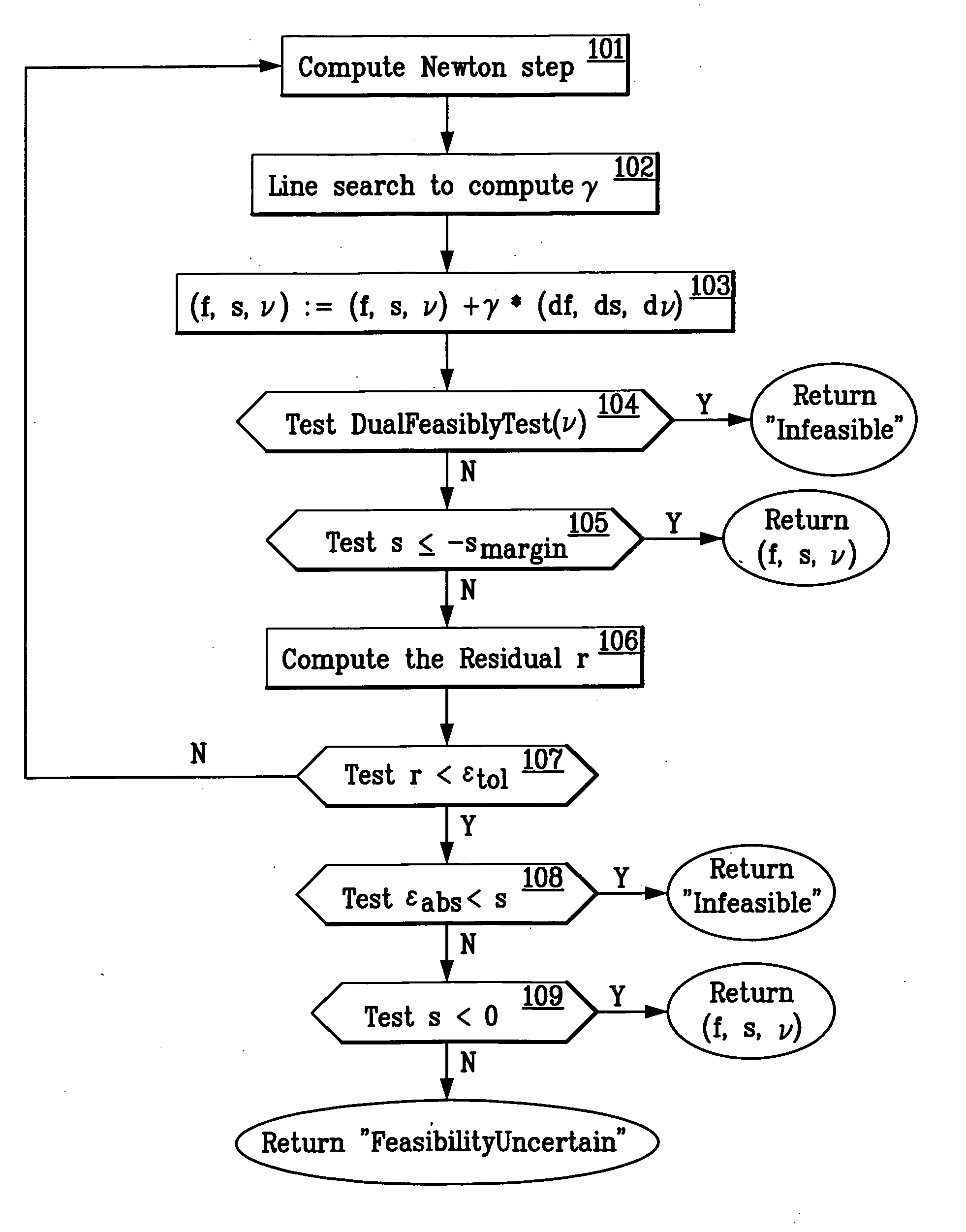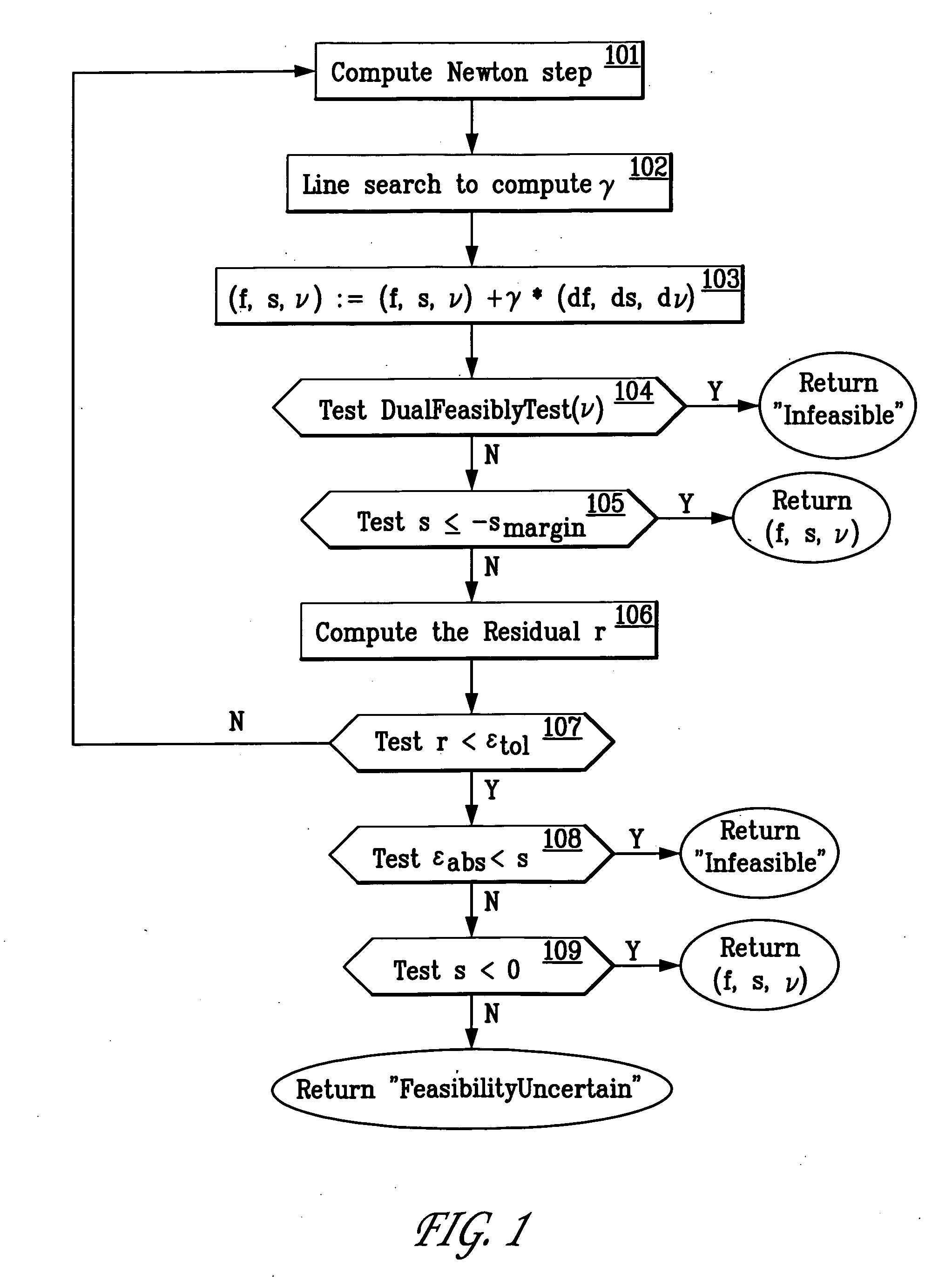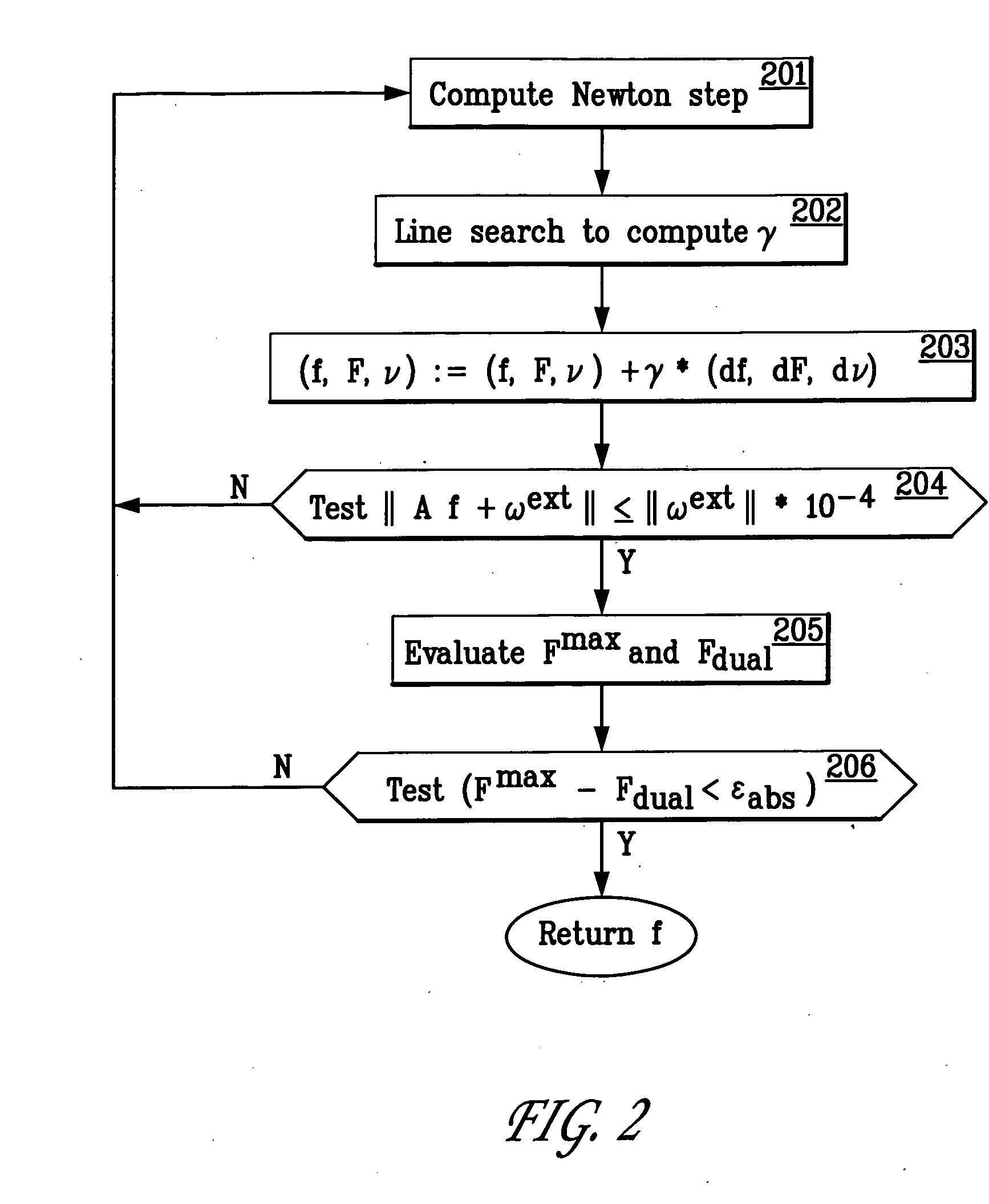Method for fast computation of optimal contact forces
a technology of optimal contact force and computation method, which is applied in the field of friction friction optimal contact force computation method, can solve the problems of large changes in the minimum required contact force, infeasibility of the other set of conditions, equilibrium force and torque balance condition, etc., and achieve the effect of rapid determination of the feasibility of the optimization problem of for
- Summary
- Abstract
- Description
- Claims
- Application Information
AI Technical Summary
Benefits of technology
Problems solved by technology
Method used
Image
Examples
first embodiment
bsolute Tolerance
[0139]The first embodiment is a customization of the standard primal barrier method, designed for solving the force optimization problem and related problems.
[0140]In a standard primal barrier method, the barrier subproblem of Equation (20) is solved for an increasing sequence of values of the accuracy parameter t. The Newton method for each subproblem is initialized at the optimal solution of the previous one. A typical method for increasing the accuracy parameter t is to multiply it by a factor on the order of 10. (See Boyd and Vandenberghe, Convex Optimization, supra.) This is repeated until Γ / t is smaller than the required tolerance, where Γ is a problem parameter computed from the number and order of the inequalities. For 2 M inequalities of order 2, Γ is 4 M, so the test compares 4M / t with the required tolerance. This basic barrier method can solve the FOP using on the order of 50 or so Newton iterations, provided the problem is feasible and provided it is sup...
second embodiment
lative Tolerance
[0174]The first embodiment produces a solution whose objective value is guaranteed to be within an absolute tolerance εabs of the optimal value. The second embodiment solves the primal barrier subproblem to a relative tolerance. This is a novel technique that is suitable in certain applications. The solution has the property that the computed value is within the fraction εrel of the optimal value. For reasonable values of the parameter εrel, the second embodiment can solve the force optimization problem satisfactorily using between 5 and 10 Newton iterations.
[0175]The second embodiment has two major advantages compared with standard software for solving SOCPs. First, it solves the force optimization problem using significantly fewer Newton iterations than a standard method. Second, each Newton iteration requires significantly fewer floating point operations than a standard method, because it uses the CBE method. These are two advantages of the present invention.
[0176...
third embodiment
[0185]Suppose that in some application, a force optimization problem has been solved and then it is necessary to solve a new FOP with problem data that is “close” to the solved problem, i.e., the external wrench ωext, the contact matrix A, and the coefficients of friction μi are not far from those of a previously solved problem. In the general case, a set of related force optimization problems are to be solved.
[0186]This third embodiment is a method for finding the solution to a set of force optimization problems. It solves the first problem of the set using the method of the first or second embodiment and retains the solution state. It then uses a warm-start method to solve the remaining problems.
[0187]The so-called “warm-start” method uses the contact force vector fprior from the retained solution state as the starting point for Newton's method in the barrier subproblem. This assumes that fprior satisfies the friction cone constraints for the new problem. If it does not, a closely...
PUM
 Login to View More
Login to View More Abstract
Description
Claims
Application Information
 Login to View More
Login to View More - R&D
- Intellectual Property
- Life Sciences
- Materials
- Tech Scout
- Unparalleled Data Quality
- Higher Quality Content
- 60% Fewer Hallucinations
Browse by: Latest US Patents, China's latest patents, Technical Efficacy Thesaurus, Application Domain, Technology Topic, Popular Technical Reports.
© 2025 PatSnap. All rights reserved.Legal|Privacy policy|Modern Slavery Act Transparency Statement|Sitemap|About US| Contact US: help@patsnap.com



